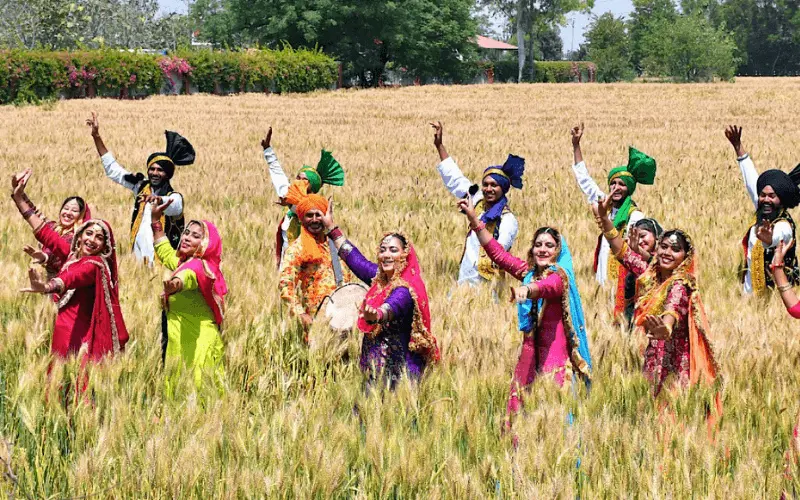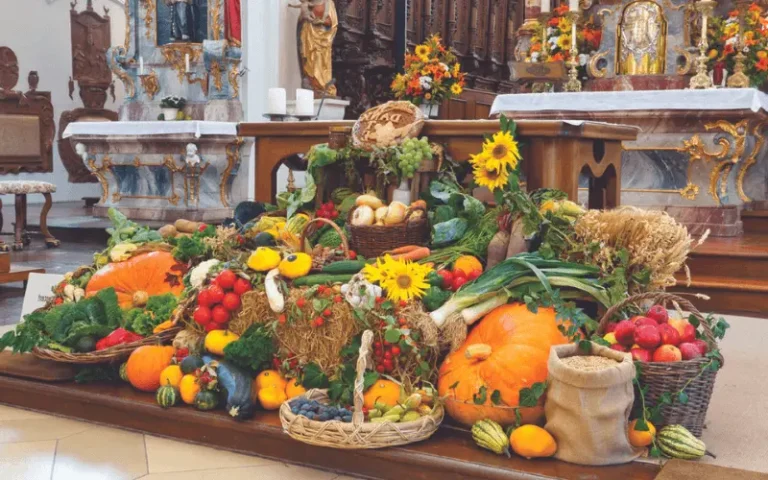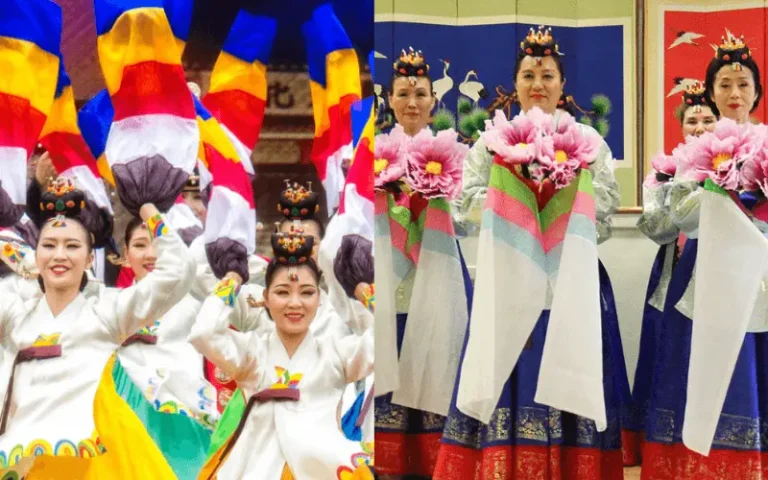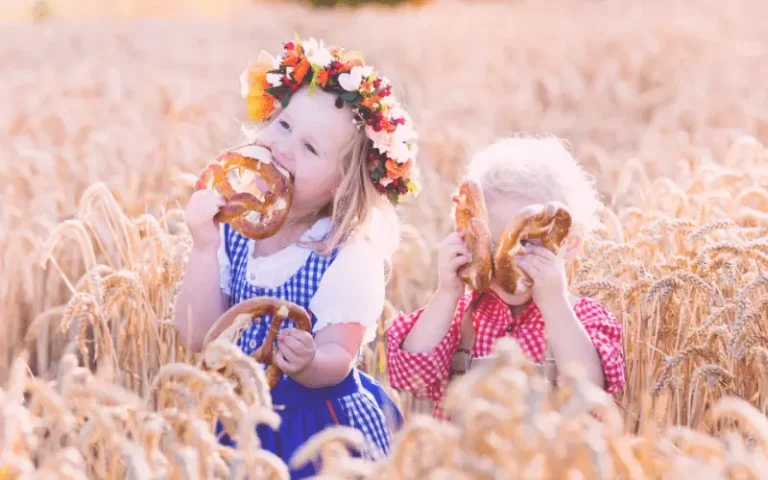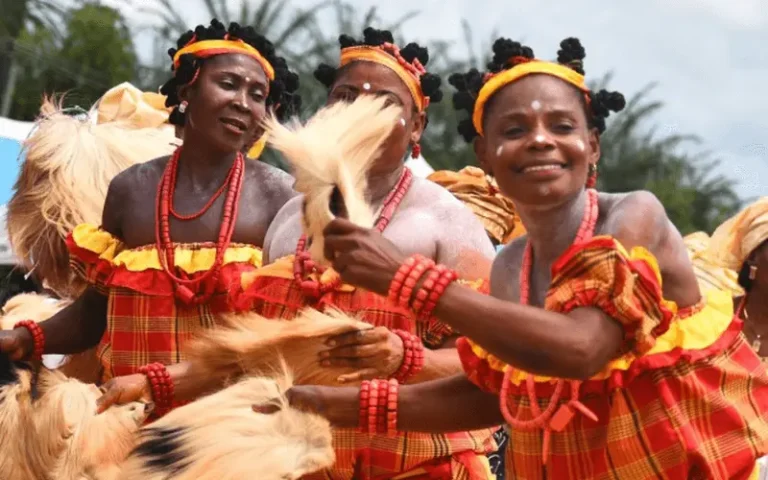Vaisakhi or Baisakhi| Harvest Festival of India| All You Need To Know About Largest Sikh Celebration
Have you ever felt the pulse of spring in a festival’s embrace? Enter Baisakhi, a radiant celebration also known as Vaisakhi or Vaisakh San, marks this vibrant transition. Celebrated around April 13th or 14th, it’s a time of immense joy, especially for farmers. It signals the end of the harvest season and becomes a thankful celebration for nature’s bounty. Punjab awakens on Baisakhi morning, dressed in its happiest colors, preparing for a day filled with gratitude and festivity.
Stay tuned to learn the history, and origin of the Baisakhi festival, and when it will be celebrated. And who and how this festival can be celebrated?
History and Origin of the Vaisakhi Festival
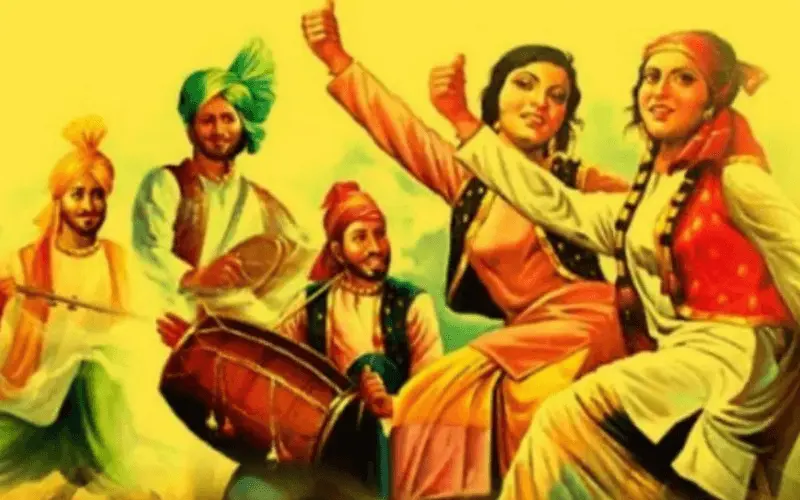
Long ago, in the heartlands of Punjab, there existed a time when the arrival of spring not only heralded nature’s renewal but marked a profound turning point in Sikh history. It was during the 17th century when the third Sikh Guru, Guru Amar Das Ji, initiated the celebration of the Sikh New Year through a festival known as Vaisakhi Festival or Baisakhi Festival.
As the legend goes, this festival gained unparalleled significance in the year 1699 when the tenth Sikh Guru, Sri Guru Gobind Singh Ji, chose the auspicious day of Baisakhi to establish the Khalsa Panth, transforming the essence of Baisakhi from a traditional harvest festival to a pivotal Sikh Festival.
On that fateful day, amidst the flourishing fields and vibrant colors of Baisakhi, Guru Gobind Singh Ji called forth a congregation. Amidst the fervor of the gathering, he presented a new vision, a new order the Khalsa. He stirred the hearts of his followers, demanding courage, righteousness, and a commitment to defending truth and justice. Five individuals, known as the Panj Pyare, offered their lives, symbolizing the birth of the Khalsa.
This historic event during the Vaisakhi of 1699 not only marked the birth of the Khalsa but also instilled a new spirit among Sikhs a spirit of courage, unity, and dedication. It turned the festival of Vaisakh San into an emblem of Sikh identity and a celebration of valor and righteousness.
In the annals of history, Baisakhi of 1699 shines as a beacon of Sikh faith, a testament to the unyielding spirit of Guru Gobind Singh Ji’s teachings. Today, this festival continues to commemorate the Khalsa initiation and stands as a reminder of the rich Sikh heritage, revered not just as a harvest feast but as a momentous milestone in Sikh history.
When is Baisakhi celebrated?

Every year, Vaisakh San is celebrated around April 13th or 14th. It’s a time filled with vibrant festivities and cultural celebrations, marking the onset of spring and the harvest season.
Now, looking ahead to 2024, Baisakhi will fall on a special day Saturday, April 13th.
Who celebrates the Vaisakh San Festival?
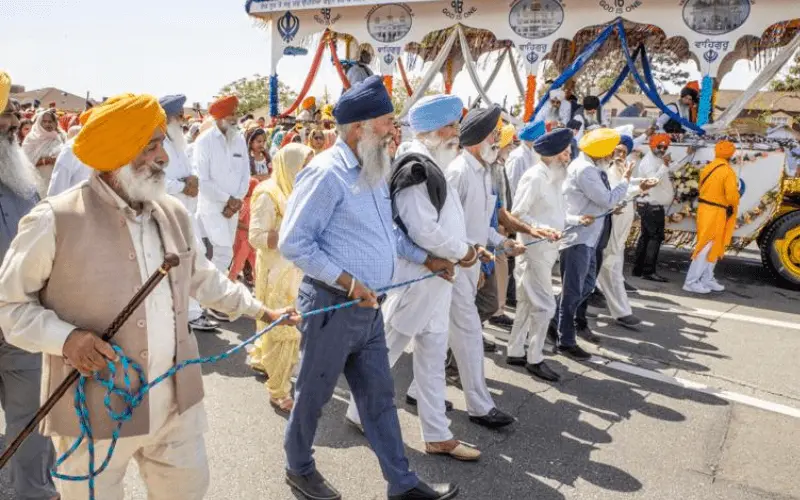
The Sikh community primarily celebrates the Vaisakh San festival, which is one of the Top 5 Sikh Holidays, considering it a vital part of their cultural and religious calendar. Hindus in regions like Punjab and Haryana also join in the festivities. Additionally, people from various backgrounds come together to celebrate, embracing the joy and unity that the Vaisakh San festival brings.
now let’s talk about how this festival is celebrated.
How do we celebrate Baisakhi?
The Vaisakh San Festival is celebrated through:
1. Visit to Gurdwaras
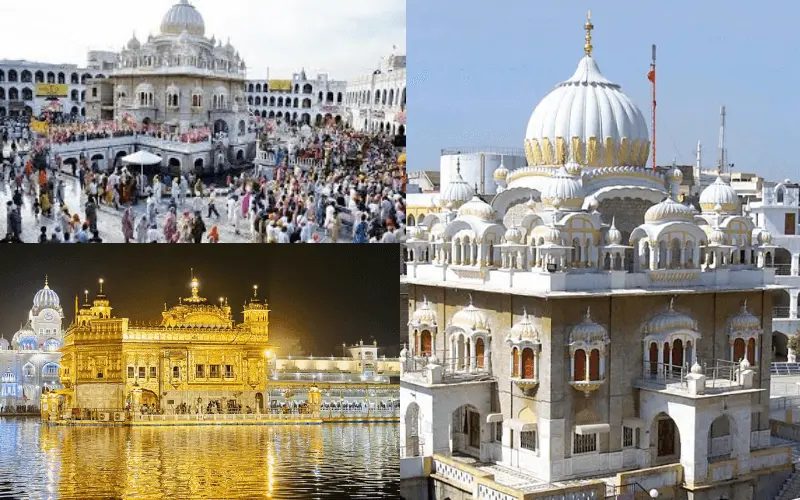
People start their day by visiting Gurdwaras, places of Sikh worship, for special prayers and hymns.
2. Special Prayers and Kirtan
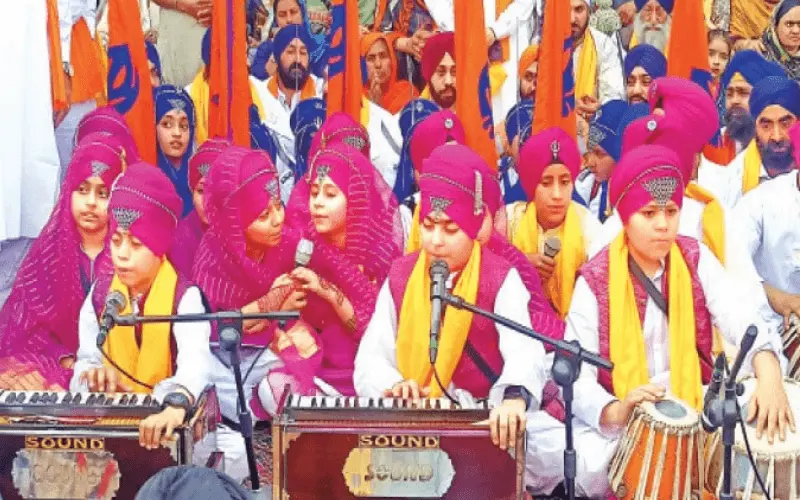
Inside the Gurdwaras, special prayers are offered, and devotional songs known as Kirtan are sung to celebrate the occasion.
3. Nagar Kirtan Procession

A vibrant procession called Nagar Kirtan moves through the streets, led by the Panj Pyare (Five Beloved Ones), displaying Sikh martial arts and carrying the Guru Granth Sahib, the Sikh holy scripture.
4. Langar – Communal Meal
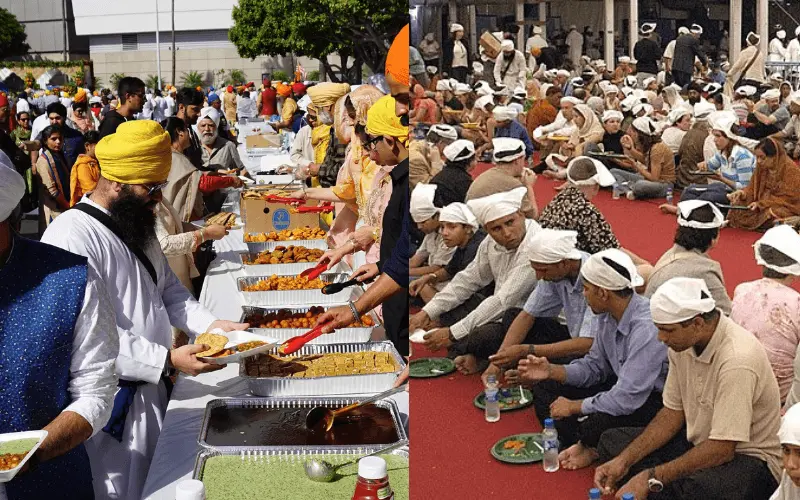
Communities come together to prepare and share a communal meal called Langar, served to everyone regardless of background, emphasizing equality and unity.
5. Traditional Dances

Festivities continue with traditional dances like Bhangra and Gidda, where people dance joyously to the beat of folk music, adding a colorful touch to the celebrations.
6. Charity and Service (Seva)
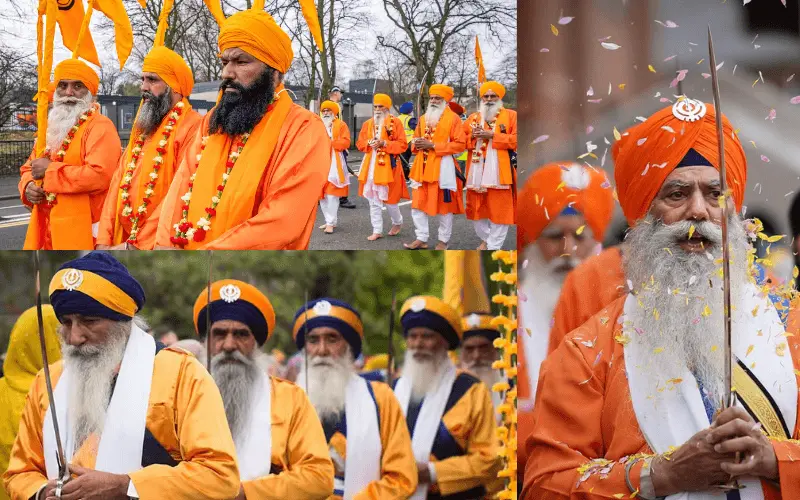
Vaisakh San Festival often involves acts of charity and service, embodying Sikh values. Many engage in volunteer work, helping those in need as a way to give back to the community.
7. Delicious Feasts
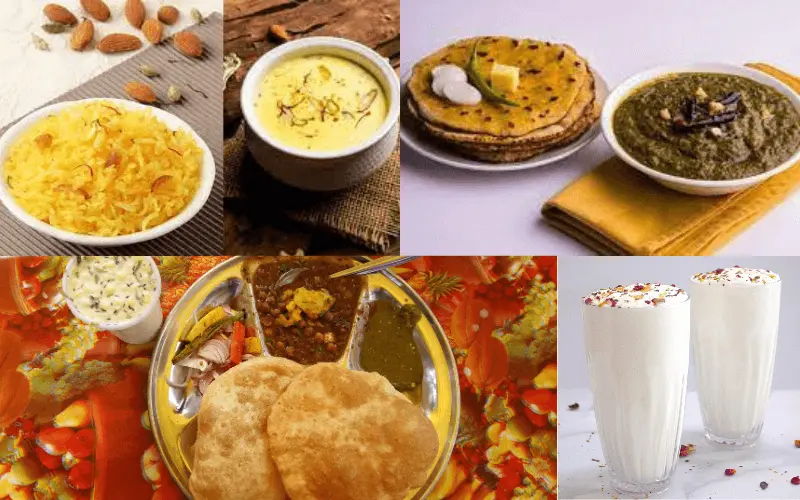
Traditional foods take center stage, including Makki ki Roti and Sarson Ka Saag (cornbread with mustard greens), Meethe Chawal (sweet rice), Sweet Lassi (sweetened yogurt drink), Kesar Phirni (saffron rice pudding), and Chole Bhature (chickpea curry with fried bread), delighting taste buds during the festivities.
Throughout these celebrations, the spirit of unity, gratitude, and communal harmony shines brightly, making Baisakhi a time of joyous festivity and cultural richness.
Regional and cultural variations in Vaisakh San Festival
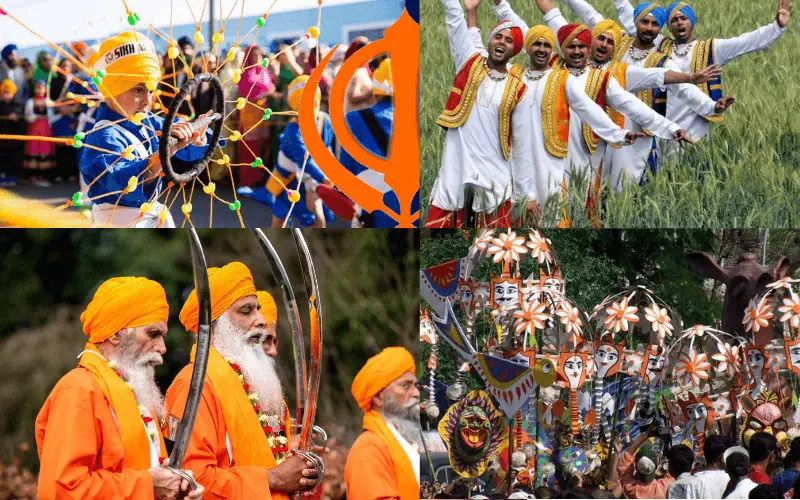
The celebration of Vaisakh San Festival showcases beautiful regional and cultural variations across different areas:
Read other Harvest Festival Guides by Days Discuss
Mid-Autumn Festival (Moon Festival)
Holi Festival 2024| All you need to know
Sukkot 101| Quick Guide to Celebrating this Joyous Festival
Songkran 2024 (Thailand’s New Year Water Fight Festival)
Chuseok 2024| Korean Thanksgiving and Harvest Festival Quick Guide to Celebrate
Thanksgiving Day: History, Global Celebrations, and 6 Amazing Games for Festive Fun
Pongal Festival (All You Need To Know)
Erntedankfest 2024| Thanksgiving in Germany
Mabon(Autumn Equinox)| All You Need To Know About Pagan Thanksgiving
Gawai Dayak (Malaysian Thanksgiving Festival)
Onam Festival|All You Need to Know About The Biggest Festival in Kerala
Lughnasadh 2024| Celebrating the Celtic Harvest Tradition Quick Guide
Conclusion
Baisakhi embodies the joy of spring and harvest, celebrated through Gurdwara visits, communal meals, colorful processions, and lively dances. It’s a festival fostering unity, charity, and cultural diversity, inviting everyone to join in the vibrant celebrations. This joyous occasion reflects gratitude, unity, and the beautiful traditions of Sikh culture.
Frequently Asked Questions
What is Baisakhi celebrated for?
Baisakhi is celebrated as an agricultural festival symbolizing happiness and prosperity. It marks the joyous culmination of the harvest season, expressing gratitude for nature’s bounty and ushering in a time of happiness and abundance for communities, especially in regions like Punjab and Northern India.
Is Baisakhi Punjabi New Year?
Yes, Vaisakh San holds the traditional significance of being the Sikh New Year. It’s a momentous occasion in Sikh culture, marking the beginning of the new year and often regarded as a time for new beginnings, spiritual reflection, and celebrating the rich Sikh heritage and values.
What is the religious belief of Baisakhi?
Baisakhi stands as the paramount religious festival for Sikhs, holding immense significance in their faith. It commemorates the formation of the Khalsa Panth by Guru Gobind Singh Ji in 1699 and embodies the values of courage, unity, and devotion within Sikhism. It’s a time for Sikhs to reflect on their history, reaffirm their beliefs, and celebrate their identity and shared values as a community.
What food is eaten on Baisakhi?
On Baisakhi, a variety of delightful dishes grace the tables, and among them, “meethe chawal,” sweet yellow rice, takes a prominent place. Alongside this sweet treat, traditional dishes like Sarson Ka Saag and Makki ki Roti, Chole Bhature, Kesar Phirni, and Sweet Lassi add flavorsome delight to the festive spread, enriching the celebrations with their unique tastes and aromas.

